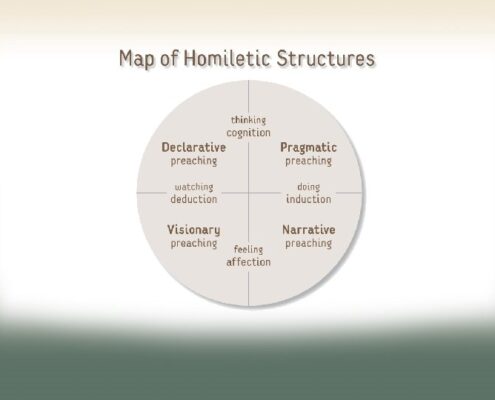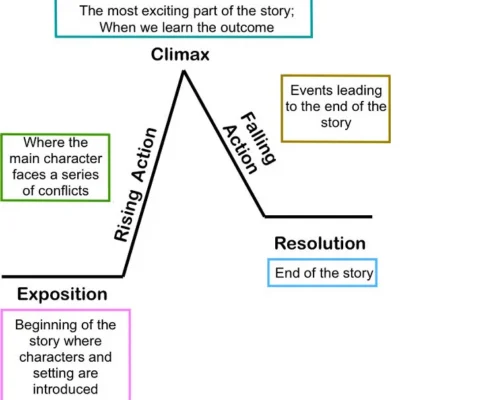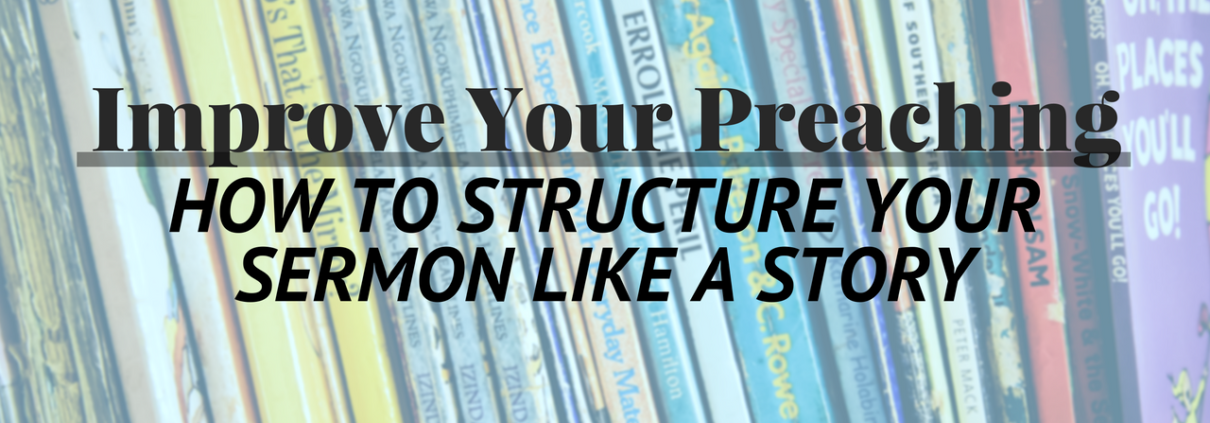How To Make A Narrative Sermon
How To Make A Narrative Sermon
We’ve been considering some “new maps” or different ways to think of organizing your sermon. The first in this series of posts is here. In today’s post we are going to consider how to make a narrative sermon that sings. Here is the image I’ve been working with, from Kenton C. Anderson’s book, Choosing To Preach.

Notice that narrative preaching falls on the right hand side of the graphic, which means it is inductive in character. In other words, truth is not found logically, but more as a result of considering story and anecdote. Inductive thinking is defined as:
Inductive reasoning is a method of logical thinking that combines observations with experiential information to reach a conclusion. When you can look at a specific set of data and form general conclusions based on existing knowledge from past experiences, you are using inductive reasoning.
Here is an example of inductive reasoning from the article cited above:
-
After noticing assisted living center residents’ moods improve when young children visit, an activities leader develops a volunteer initiative with local schools to pair students with center residents.
The Narrative Sermon
A narrative sermon, then, calls upon the knowledge base of the listeners, so that they experience a sense of “discovery”, or affirmation of truth. Often narrative sermons are in the form of a story. Everybody loves a story, right? Maybe the best model for the narrative sermon is the story-teller, whether that is a novelist or a screen writer for movies or television. In other words, in the narrative sermon there is not a linear presentation of ideas, but rather, a series of scenes, or pictures. It’s a story. The ideas tap into the experience of the listener.
How To Tell The Story
There are many ways to tell a story, but here are some of the elements of a typical novel or script.
It begins with exposition, or the introduction of the characters and the setting.
Conflict comes next.
Rising action deals with how the characters deal with the conflict
Then there is a climax, where action reaches the highest point in the story.
Falling action is next.
And finally, resolution.
The Story
This is the kind of organization you would use if you were writing a book, creating a movie, or telling a story to your children. What’s the story as we learn how to make a narrative sermon for worship?
The story is simply the great story of salvation and living out the salvation that God has offered you. I like the way that Anderson puts it in his book. He describes it as the convergence of 3 circles.

Picture the top circle as God’s story as we have it recorded in the Scriptures.
The bottom left circle is Their Story. That represents the original readers of the Bible stories. What did the message mean for them?
The bottom right circle represents Our Story. In other words, how does God’s story relate to us once we have come to understand how the story related originally.
Put these three sections together, and you have a narrative sermon. In a nutshell, that’s how you make a narrative sermon for your congregation.
The First-Person Sermon
One of the most powerful narrative sermons is the first person sermon. In this sermon the preacher becomes an actor, pretending to be one of the characters from Scripture. If you’re the creative type, you will find this a delightful challenge. For many years I did this for the Christmas season. I was a shepherd, Luke the gospel writer, Herod the King, and others. It struck me that 33 years after I left my first church, a couple of the people there said that it was the characters, the first-person sermons that I preached, that they remembered the most. Give it a try sometime!
Making A Narrative Sermon
Here are some suggested steps.
- Start with Surprise–introduce the setting and the characters in the story.
- Build tension. For the shepherd sermon I built tension by talking about what it was like to be a shepherd in that society: distrusted, bottom-of-the-social-ladder existence.
- Bring a climax into the story.
- Wrap it up with application to the lives of the people who are listening.
Because every story is different, the outline of the story will likely change. However, this is how to make a narrative sermon sing.
Here is a clip of Eugene Lowry using a narrative style in a sermon.



